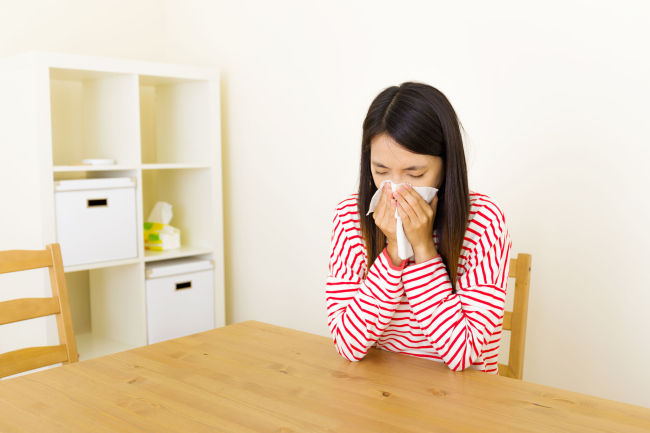Allergic rhinitis, an inflammation of the nasal airways, occurs most often among Koreans in the fall, especially in the months of September and October, according to the Health Ministry.
Some 601,000 Koreans were treated for the condition last year, and most patients ― 206,261 ― developed the allergic reaction in September, according to a study conducted by the National Health Insurance Service.
Allergic rhinitis is often triggered by pollen from seasonal plants, including weeds, trees and grasses. The findings suggest that the pollen of weeds and mugwort in Korea are the main causes of a large number of allergic rhinitis patients in autumn.
“In South Korea, pine trees and alder trees are what cause allergic rhinitis the most in the spring,” the Health Ministry said in a statement. “In fall, it’s the pollen of weeds, such as ragweed, and mugwort.”
Some 601,000 Koreans were treated for the condition last year, and most patients ― 206,261 ― developed the allergic reaction in September, according to a study conducted by the National Health Insurance Service.
Allergic rhinitis is often triggered by pollen from seasonal plants, including weeds, trees and grasses. The findings suggest that the pollen of weeds and mugwort in Korea are the main causes of a large number of allergic rhinitis patients in autumn.
“In South Korea, pine trees and alder trees are what cause allergic rhinitis the most in the spring,” the Health Ministry said in a statement. “In fall, it’s the pollen of weeds, such as ragweed, and mugwort.”

The symptoms of the allergy include sneezing, swelling and inflammation of the nasal passages along with itchy and watery eyes.
In severe cases, the condition causes headaches and may develop into middle-ear inflammation, chronic sinus infections and asthma if left untreated.
“That is why it is important to get the right diagnosis and get the right treatment,” a Health Ministry official said. “It is easy to mistake allergic rhinitis for a cold or flu.”
The number of allergic rhinitis patients has been on the rise in South Korea since 2008. Last year, a total of 601,026 patients were treated for the illness, while only 457,032 visited doctors while experiencing symptoms.
The largest number of patients were children aged 9 or under, followed by teenagers. Children aged 9 or under accounted for more than 20 percent of the total number of patients.
“The allergic reaction is associated with hormonal changes during puberty,” said the Health Ministry. “Also, children are exposed to things that may cause allergic reactions as they go to school and spend time with many of their colleagues at the same time.”
For those who have severe symptoms, it is recommended to stay indoors during the day to reduce exposure to pollen.
Wearing sunglasses and keeping windows closed when in a car and at home help protect one’s eyes. Wearing medical masks also helps.
The Health Ministry said sometimes it is hard to identify which kinds of pollen cause allergic reactions for certain patients.
“Sometimes, the pollen that causes allergic reactions is from regions that are far away from where the patient lives,” it said.
“In that case, it is essential to study the patient’s previous health records and perform an allergy test in order to identify the pollen that is causing the allergy.”
Once diagnosed, antihistamines can be taken, both nasally and orally, to control itchiness, sneezing and other symptoms. In some cases, steroid nasal sprays are used to control symptoms as well, especially nasal congestion and rhinorrhea, a condition that involves a persistent watery mucus discharged from the nose.
By Claire Lee (dyc@heraldcorp.com)









![[Kim Seong-kon] Democracy and the future of South Korea](http://res.heraldm.com/phpwas/restmb_idxmake.php?idx=644&simg=/content/image/2024/04/16/20240416050802_0.jpg&u=)







![[KH Explains] Hyundai's full hybrid edge to pay off amid slow transition to pure EVs](http://res.heraldm.com/phpwas/restmb_idxmake.php?idx=652&simg=/content/image/2024/04/18/20240418050645_0.jpg&u=20240418181020)

![[Today’s K-pop] Zico drops snippet of collaboration with Jennie](http://res.heraldm.com/phpwas/restmb_idxmake.php?idx=642&simg=/content/image/2024/04/18/20240418050702_0.jpg&u=)